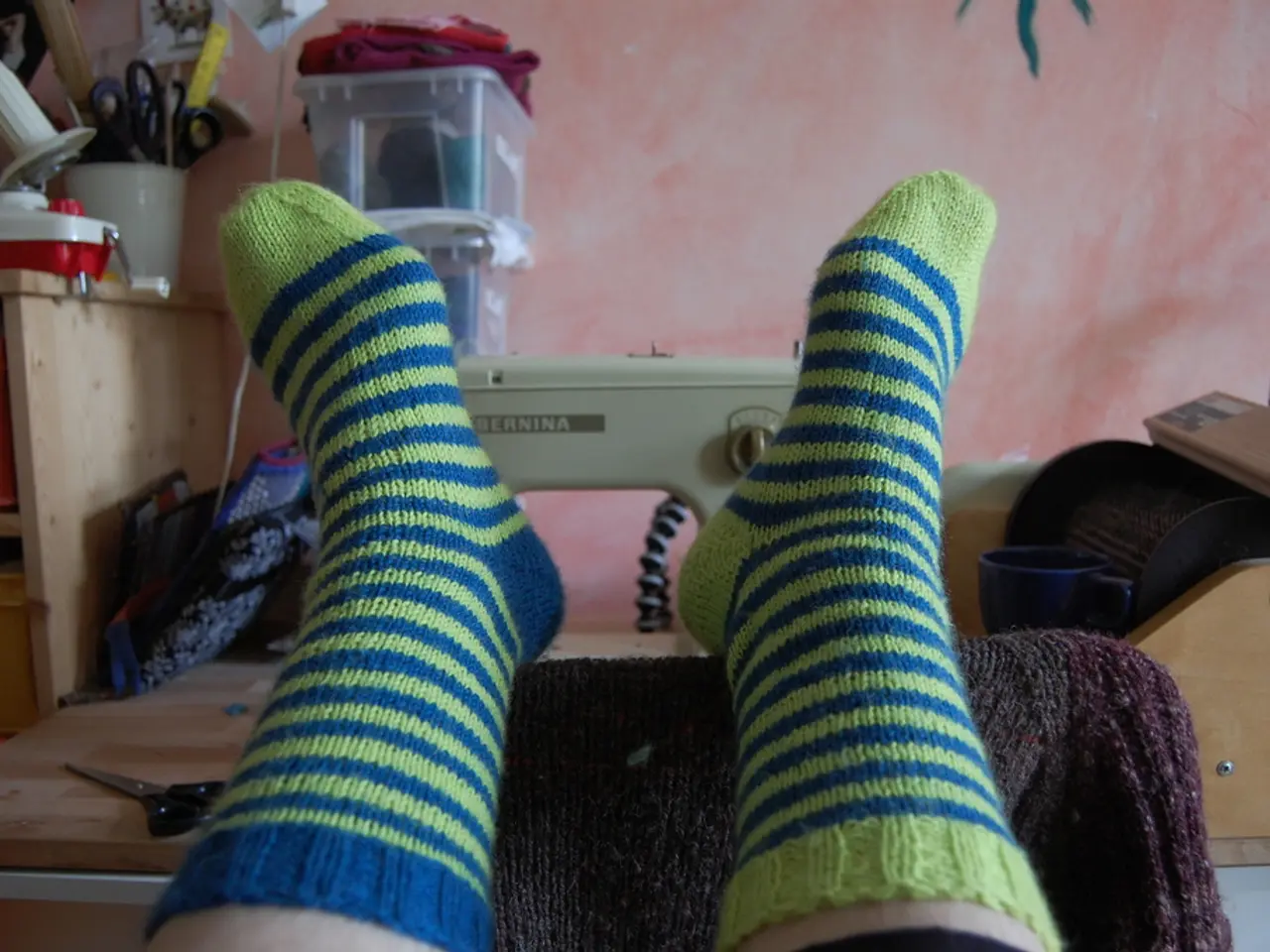Sewing Pattern Decoding for Novices: A Step-by-Step Guide
Printing and assembling a PDF sewing pattern at home can be an exciting and rewarding experience. Here's a comprehensive guide to help you navigate the process smoothly.
**Step 1: Obtain the Pattern**
Start by purchasing or downloading your preferred PDF sewing pattern. Save the file to a convenient location on your computer for easy access.
**Step 2: Prepare for Printing**
Open your PDF pattern using a PDF reader like Adobe Acrobat. Some patterns come with layers for different sizes. Decide if you want to print all layers or just the size you need. Before printing, ensure your printer is set to print at 'Actual Size' or 'No Scaling'. Choose the appropriate paper size and orientation (usually A4 or Letter). Adjust settings as necessary depending on your printer and PDF reader.
**Step 3: Print the Pattern**
Click the print icon in your PDF reader to begin printing the pattern pages. Most PDF sewing patterns consist of multiple pages that need to be printed. Ensure you have enough paper for all pages.
**Step 4: Assemble the Pattern**
Look for alignment marks (usually in the corners) to match and tape the pages together. Use masking tape or clear packing tape to secure the pages, creating a seamless large sheet of your sewing pattern.
**Step 5: Cut Out Pattern Pieces**
Carefully cut out the pattern pieces, ensuring you are cutting along the correct lines for your chosen size. If needed, use a ruler to help align pages more precisely.
**Additional Tips**
- When printing PDF sewing patterns at home, print them at 100% (or Actual Size) and cut off edges to piece them together. - Grainline should be matched up with the direction the arrow is pointing with the grain on the fabric, which runs parallel to the selvedges. - If you find you're between two sizes, for example, your bust measurements fit a 10 but your waist a 12, you may need to grade between the 10 at the bust, blending out to the 12 at the waistline. - Bust and hip indicators are used to check if the pattern fits your shape, indicating the bustline, waistline, or hipline on the pattern. - Pattern pieces are used to pin to fabric, trace around, and cut out. - In the instruction booklet, you'll find the layplan, which is a common term for a diagram that shows you how to best lay out your pattern pieces. - Most patterns require folding the fabric in half before attaching/tracing the pattern pieces, which is indicated on the pattern pieces as 'Cut on the Fold'. - Buttonholes are usually represented by a horizontal or vertical line, and the button position is marked on this line with an X. - Notches are triangles or lines marked on the edges of a pattern to indicate where to match up two pattern pieces and fit them together. - Instruction booklets for sewing patterns cover common terminology, step-by-step instructions, and a list of pattern pieces.
By following these steps and tips, you can successfully print and assemble your PDF sewing pattern at home, ready to bring your creative visions to life!
- Handmade quilting and crochet projects can be sourced from various fashion-and-beauty and home-and-garden lifestyle websites, allowing you to download and print your own patterns at home.
- For those interested in furthering their sewing skills, educational resources on quilting, crochet, and sewing are readily available in the education-and-self-development category of these websites.
- With your newfound proficiency in sewing, you can create a variety of handmade items, from clothing and accessories to home decor items, enhancing both your fashion sense and home interiors.
- Consider joining online quilting or crochet communities to share your creations, exchange tips, and engage in meaningful discussions related to these traditional crafts, adding a creative and sociable aspect to your hobby.




